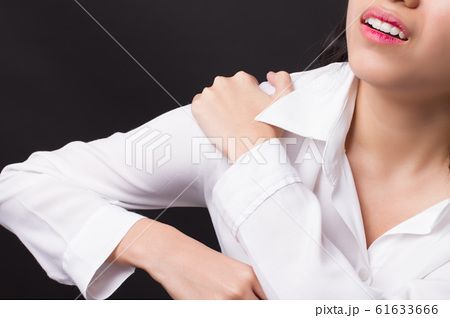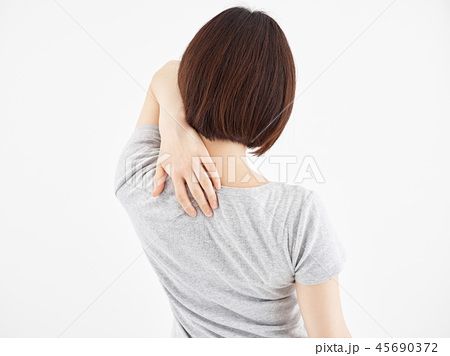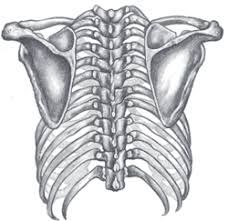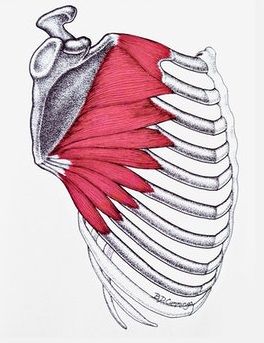Where are the shoulders? |On the anatomy of the shoulder joint

If someone asks you "Where are your shoulders?"
How would you answer?
A

B

C

warn! This article involves many proper nouns and more complex structures, please be careful of headaches when taking them!
This article is of great help as we enter "Shoulder Disorders"
Otherwise, the articles in the future will be long...
The shoulder joint consists of the "scapula", "humerus" and "clavicular"
common structure
Suspended from the thorax by many muscles, ligaments, and joint capsules
glenohumeral joint
This is the "ball and socket joint" made up of the glenoid fossa of the scapula and the head of the humerus

It is the most mobile joint in the human body
This joint is like a big ball in a shallow bowl
Large rolling range, high mobility, and low natural stability
Therefore, it is also " the joint most likely to dislocate "
To protect this joint, which is often at risk of dislocation
There are many muscles and ligaments surrounding the shoulder joint
Use the tension provided by the muscles to create "dynamic stability" combined with the "static stability" of the ligaments
The humeral head stays in the glenoid fossa of the scapula
When the joint capsule of this joint is sticky and chronically inflamed for some reason, it will produce " adhesive capsulitis" commonly known as fifty shoulders
shoulder blade

The shoulder blades are the little wings behind the human body
Many large muscle groups in the back of the body are attached to it
So it is shouldered to provide stability when the upper body is active

【 Upper, middle and lower trapezius muscles】
is the superficial large muscle attached to the scapula
Next is the most important muscle group in the physical therapy world - " Rotator culf "
The main movements include shoulder joint "External rotation", "Internal rotation", "Abduction"
This muscle will be mentioned later when we refer to " Impingement Syndrome "
It is the biggest player in pressing down the humeral head, so when it is weak or difficult to exert force, it is easy to cause pinching syndrome
【Romboid Muscle】
It often finds weakness in people with hunched backs and round shoulders
This will cause the skew of the scapula plane, which will make the upper limbs inefficient during activities, which may easily cause injury.
In the following articles, I will mention "home exercises that must be done", and the chest expansion exercise is one of them.
【Serratus anterior】

Have you ever done pushups ?
Do you know which muscles can be trained in addition to the chest muscles in this exercise?
The job is to press the scapula and make a forward sliding motion
So if your shoulder blades are always up, pushups can be a good choice for your home exercise (but you need to know how to adjust the intensity)

【Acromion】(blue circle)
Step is when you touch up along the outside of your arm, you will feel a hard and bald structure at the upper corner of the corner.
A space is formed below it to the glenohumeral joint
Space for the passage of "Supraspinatus" belonging to the rotator muscle group
The pinching syndrome is when the space becomes narrow and the underlying supraspinatus muscles are compressed.
【Coracoid process】(red circle)
It is the origin of the pectoralis minor and Biceps long head
These two muscles are also commonly used in the human body and are easily tightened.
Especially when the pectoralis minor is too tight, it compresses the space below it for the " Brachial plexus " to pass through
Causes Thoracic outlet syndrome
Also often seen in people with poor posture
Clavicle

This girl's favorite bone usually works to fix the shoulder joint on the sternum (Sternum)
Then by giving the shoulders more up and back angles
Therefore, in many patients with shoulder pain and poor mobility, it is often treated with a little less angle at the end.
The problem lies in " Sternoclavicular Joint " and " Acromioclavicular joint"
So, your answer is?
The answer is: all of the above
The multi-angle large movements of the shoulder joint are completed by the above-mentioned joints and muscles.
Missing either of these may result in insufficient angle of motion, pain
In addition, this structure is attached to the thorax, and the skewness of the thoracic vertebrae and ribs will also affect the smoothness of the movement.
As the ramp for the nerves of the upper limbs, if the muscles here are too tight, it is easy to cause nerve compression, resulting in many problems of hand numbness, hand pain, and even weakness.
These are prone to occur in patients with long-term poor posture
Of course, the pain in the shoulder is closely related to the compression of the "cervical spine" nerve
There is no need for Baker to say this!
This article is much more professional than before
It has been simplified as much as possible, I hope you can understand it!
As the beginning of a later article on shoulder disease
Let everyone know a little bit about the shoulder joint
If you don't understand something in the article, you can come back and read it again!
-------------------------------------------------- -------------------------------------------------
I'm Baker, I'm a physical therapist, welcome to my country
.
Under the current health care system in Taiwan, no matter what the zodiac sign, the therapist will definitely write the word "world-weary" in the personality column.
.
Over time, the burning dream fire in my heart gradually went out, and "doing the 'teacher' and walking the meat" became a buff at the meeting before going to work every day . . .
.
But in my country, I hope my residents can see the real face of physical therapy and then understand, understand, and even love this profession that is "no less than any other medical technology" and "not just brainless operations" . . .
.
Finally if you like my article
Please help me click "5 likes" below, I will get a reward funded by the likecoin foundation
By pressing Like 5 times, you can sponsor my article for free, giving me full motivation to continue to bring good articles to all residents
Like my work? Don't forget to support and clap, let me know that you are with me on the road of creation. Keep this enthusiasm together!

- Author
- More